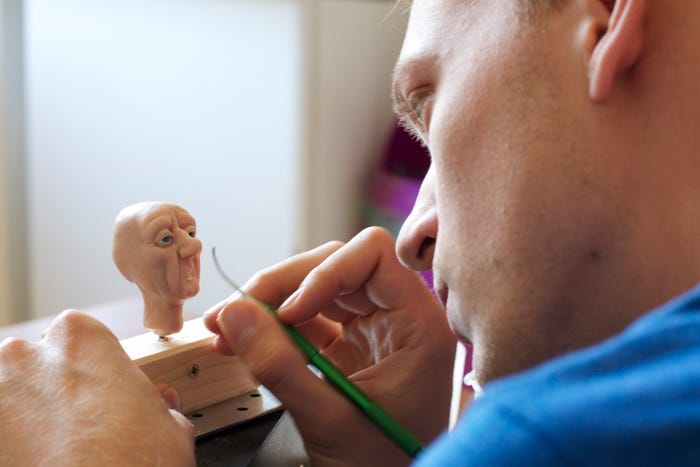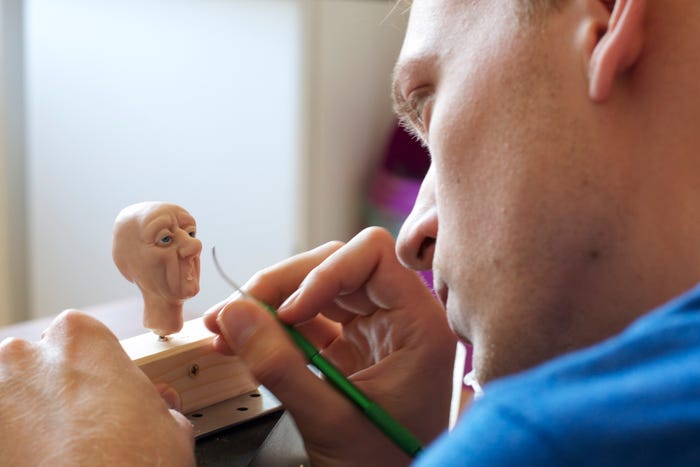
Harold Halibut is a handmade adventure over a decade in the making. What started as a student project all those years ago has morphed into a sprawling heartfelt yarn set aboard a habitable spaceship called the FEDORA that has unfortunately become stranded at the bottom of an otherworldly ocean.
Developer Slow Bros will finally allow players to immerse themselves in the retro-future sprawl it has painstakingly crafted when the title launches on April 16, 2024, bringing its long journey to an end.
When that day finally arrives, players will also be able to make the acquaintance of Harold Halibut’s offbeat cast, which wouldn’t look out of place in one of Wes Anderson’s finest soirees. Like the world itself, each inhabitant of the FEDORA was sculpted and modelled in real-life before being scanned into the game. It’s a technique that allowed Slow Bros to lean into stop motion sensibilities without compromising its ability to tweak and animate characters in the digital plane.
Visually, the results are remarkable. There’s a tactile richness to every building, object and character that manifests on-screen, but selling the aesthetic is only part of the challenge. To ensure Harold Halibut truly resonated with players, the studio had to ensure people could connect with the sentient lumps of clay that call the FEDORA home.
In searching for that glint of humanity, the team turned to an unlikely source of inspiration: Creature Comforts.
Creature Comforts combined the mundane with the unexpected
For those unfamiliar with the name, Creature Comforts is a series of TV shorts created by UK animation studio Aardman (founded in this writer’s hometown of Preston). Aardman is best known for its stop motion work on the likes of Wallace & Gromit and Chicken Run, but between 1989 and 2011 also crafted a series of shorts called Creature Comforts that blended unapologetically British vox pop interviews with animated critters.
“Maybe on a superficial level you wouldn’t expect us to go that deep [with characterization],” said Slow Bros co-founder Onat Hekimoglu, speaking to Game Developer during a recent preview event. “I had a similar feeling when I watched Creature Comforts, where you have these real-world interviews, with people talking normally, and they slapped these stop motion animals on them and suddenly you have these wonderful characters. Despite them being funny clay animals, you look at them and hear people.

A member of the Slow Bros team sculpting a character // Image via Slow Bros
“We thought this would work exactly the same way in our case, because when you have very cartoony characters like we have, you might usually have cartoony voices–and that was exactly what we didn’t want. We would have very natural acting […] and wanted to combine it with that [cartoony] look.”
Hekimoglu is right. The understated brilliance of Creature Comforts stems from how the Aardman animators married impeccably humdrum conversations with subtle artistic flourishes to create a heightened reality that still feels all too relatable. By doing something similar, the team at Slow Bros hoped to foster a sense of empathy between players and their own clay offspring.
“We generally had a lot of fun with that back and forth,” chimes Hekimoglu’s fellow studio co-founder, Ole Tillmann. “Sometimes we stressed over it to a degree because there were some team members who enjoyed the sincerity and depth and others that enjoyed flat and dumb stuff. We had to find the balance between those two sides.
“I also want to reiterate that the voice acting is amazing and our writer Danny Wadeson helped us come up with character profiles and visuals. […] He really breathed a lot of life into them by writing dialogue.”
I you’re eager to check out Creature Comforts for yourself, you can watch an entire episode of Creature Comforts below (some location restrictions may apply).






